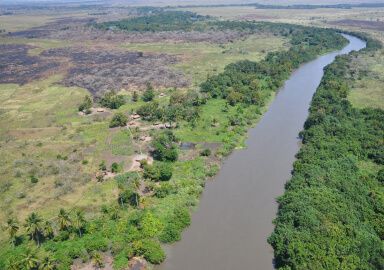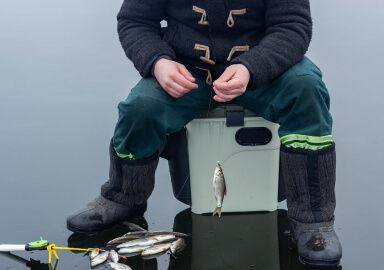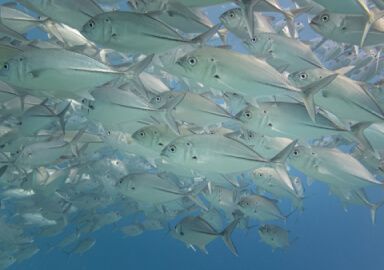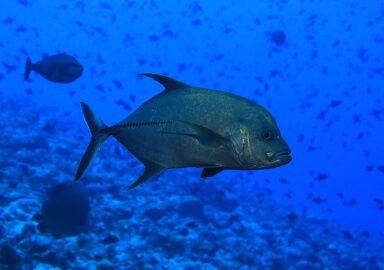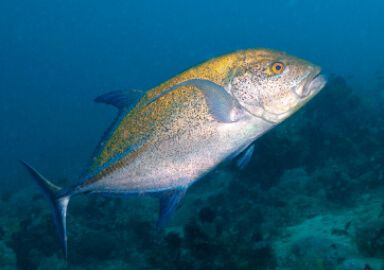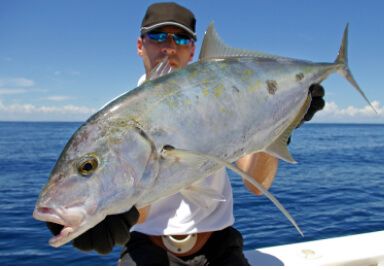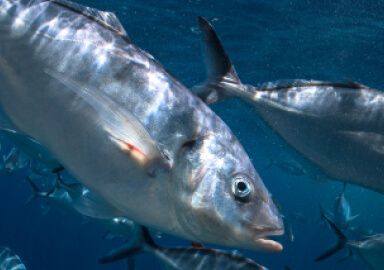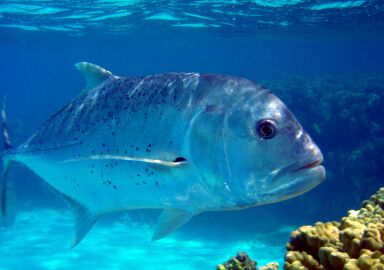Golden Trevally
The golden trevally is a medium-sized top sport angling species in many warm water coastal areas of the Indian and Pacific Oceans.
View 5 listings
5
listings
–
price starting from
2
countries
Where and When?
Golden trevally have an extensive distribution in the Indo-Pacific region and are found from South Africa eastwards to Australia, across the Pacific Ocean to Colombia, north to the Gulf of California and back past Hawaii to Japan and then the Red Sea. Golden trevally are mostly an inshore species and frequent mangrove swamps, particularly as juveniles. Offshore, they are evenly split between open water and reefs or structures.
In the warmer regions within their distribution, they are present and feeding throughout the year. In cooler climates they either migrate to warmer waters or become less active in winter. The species is active during the day and hunts mostly by sight, either ambushing individual items or sucking up detritus and bottom sediments.
About Golden Trevally
The golden trevally (Gnathanodon speciosus), also known as the banded trevally and golden kingfish, is a popular species with sport anglers, that has some commercial value as well. It is easily recognisable by its golden colour with vertical black bars as a juvenile, while adults have thick rubbery lips and golden or silvery flanks. The body shape is typical of the Carangidae family, being laterally compressed, disc shaped, with a small tail fluke.
Golden trevallys are among the larger carangids and can attain a length of 120 cm. (47 in.) and a mass of 15 kg. (33 lbs.). They are described as a diurnal foraging carnivore, and use their “projectile” mouth parts to suck up sand under rocks and filter out food items. Golden trevally feed on a wide variety of organisms, mostly molluscs and crustaceans gleaned from the ocean floor, but will also gulp in fish, cuttlefish and squid.
The sexes are separate and, for extended periods in summer, large numbers of golden trevally aggregate after dark around the structure and synchronously spawn. Juveniles often form small shoals and will follow, or precede, large marine organisms such as whale-sharks, groupers, or even jellyfish. Adults tend to be single or travel in small similar sized groups.
How to Catch?
Golden trevally can be caught by a wide variety of fishing methods, including fly, spinning and natural baits. You can fish for them from boats or shores and jetties. The method to be used depends on the preference of the sport angler and the species has an excellent reputation for fighting strongly and also for “fighting dirty”: golden trevally tend to head for cover and snag fishing lines.
fly fishing can give excellent sport, especially for medium-sized golden trevallys, as these are often common and fight well on light tackle. This method is best from the shore, among rocks or in the surf, or from small boats in shallow areas and casting towards structure.
Spinning, using artificial lures, can be productive and give excellent sport and, again, can be carried out from boat or shore. Offshore spinning usually gives easier control over placing the lure and allows fishing in deeper water. Plastics can work particularly well and are generally favoured over hard spoons and jigs.
Bait fishing is the “traditional” way to catch golden trevally but, while it does work, the other methods generally allow for more mobile fishing and it is more exciting when a strike can be seen and felt simultaneously. Catching a good-sized golden trevally, particularly from the shore, is usually a memorable and satisfying experience and well worth the effort.

